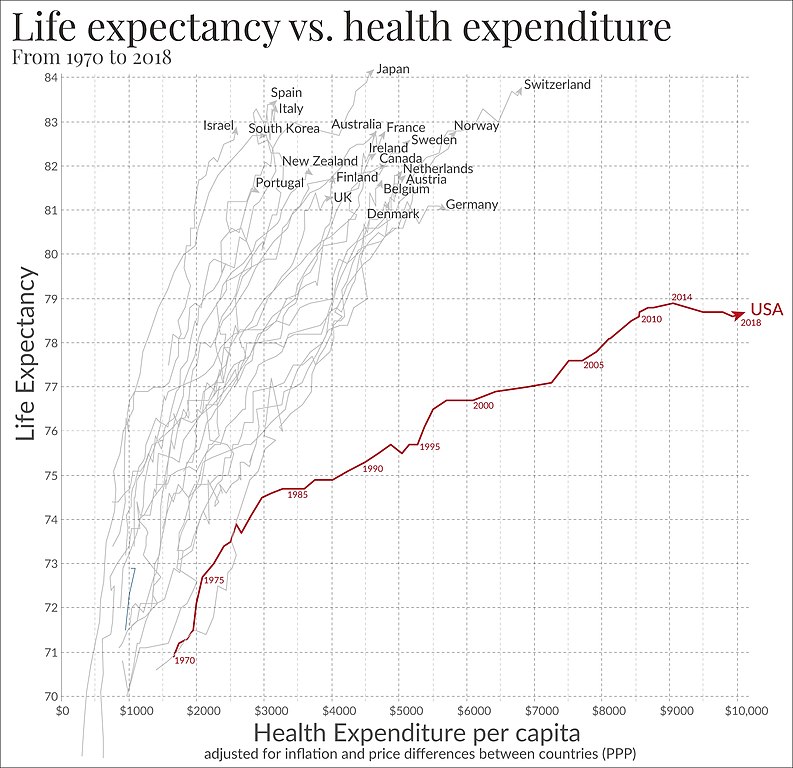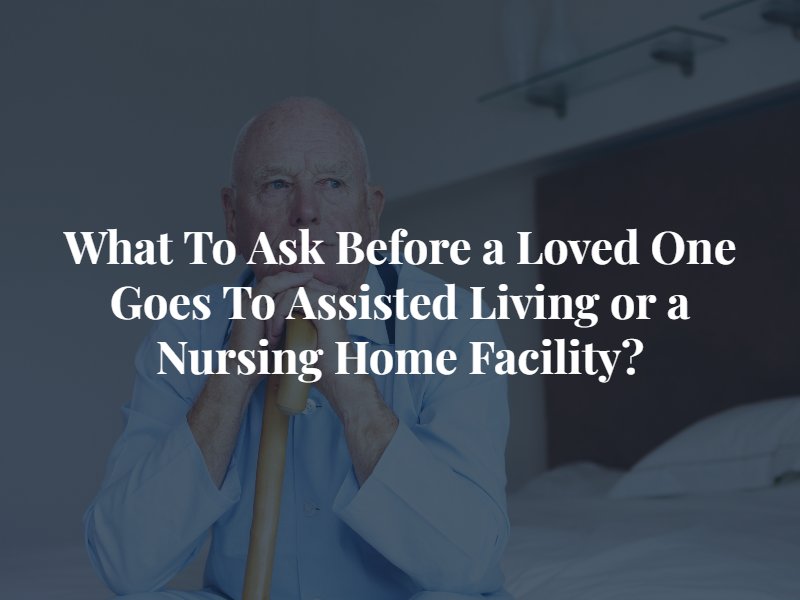The United States is unique in its approach to health care and aging loved ones. While some families are able to assist with the needs of an aging loved one, others in the United States do not have the necessary resources to handle the required needs of an aging person.
It is typical for aging parents and grandparents outside of the United States to move in with younger members of the family unit. However, the United States is quite unique in its approach to aging individuals. Having the resources to move away from your family in one way means that the conditions and health issues associated with the natural aging process can be tasked out to others in the society.
A crucial component involved in aging is quality of life and a sense of value.
While loved ones will pick up on body language, behavior and attitudes that can be more nuanced, an employee may not pick up on the same cues that a loved one would. Paid employees may in turn be simply checking the boxes. These employees may treat the senior’s issue at hand, but fail to focus on the most important aspect of all – the senior’s sense of well-being and independence.
In developing and under-developed countries, it is not uncommon for aging members of a family unit to reside and rely on younger family members for activities they can no longer engage in. From cooking, working, cleaning and performing the necessary daily chores – hundreds of millions of elderly individuals globally rely on the assistance of their able bodied family members.
In the United States however – individuals are far more likely to send their loved ones to an assisted living facility or nursing home. At costs that, on average, exceed six figures annually.
Nursing homes are marketed as a safe and practical residence for your loved one for that is having difficulty with day-to-day tasks. However, there are numerous instances where nursing homes have failed to provide the care marketed to families in need of assistance.
Caregivers & The Sandwich Generation
Child care costs on average cost $13,200 annually and nursing home facilities can surpass $100,000 a year. For the vast majority of households, these costs are not attainable and one adult will act as a caregiver to children and parents.
Ten percent of adults in the United States are considered to be members of the Sandwich Generation. Meaning that they are taking care of children – as well as a parent or grandparent.
Due to the costs of child care and elder care in the United States, adults in the United States may have no choice but to act as a caregiver in a domestic setting. Caregivers are tasked with difficult stressful jobs and may need to decrease the professional hours, or temporarily resign from their normal employment, to assist the loved one with their daily needs.
Are Expensive Elder Care Facilities Better?
Just because something is more expensive, does not necessarily mean that the service or product will be better compared to a more affordable option.
This is true with elder care facilities in the United States.
The United States spends the most amount of money per capita in the world on healthcare. As of 2022, the most recent data from the World Bank identifies that the United States spends $10,921 or 12% more per capita compared to Switzerland – the second most expensive country for healthcare by capita.
When the United States is compared to other developed nations, the money spent on healthcare does not translate to longer life expectancy. In fact the opposite occurs.
In the mid- 1980s, the United States took a severe turn in the right direction compared to other high human development index (HDI) countries. The expenditure for health care on an annual basis sharply shifted right and has since moved further away from the y-axis as health care in the United States has continued to accelerate in per-capita pricing as life-expectancy gradually levels out and continues to cost drastically more compared to the other developed countries.

In the end, it is more important to ask the questions similar to:
“How can I spend the twilight of my life enjoying my days to the best of my ability?”
Instead of the alternative.
“How can I extend my life, or, my loved one’s life as long as possible?”
Letting go of a loved one can be an incredibly difficult experience. It is however the natural cycle of impermanent beings. The United States treats aging as a medical condition, however – this perspective needs to shift. No amount of medical intervention, pharmaceutical drugs, surgical procedures or other medical techniques will be able to stop an individual from the eventual inevitable.
Medical professionals may be able to slightly extend the longevity of an aging individual with the assistance of medication, surgical intervention and/or the assistance of machines that can prolong life. This is a difficult decision for loved ones of the aging individual, while some may think that it is imperative to leave no stone unturned, the physical, emotional and financial implications can outweigh the “benefit” of extending a loved one’s life by a few months.
There also appears to be a disconnect in the longevity that medical procedures can have on an aging loved ones. While family members may be thinking that an operation or medication can extend a loved-ones life by decades. Medical professionals however may be thinking in months or a few years.
What’s The Difference Between Assisted Living Facilities & Nursing Homes?
Assisted living was originally coined by Karen Brown Wilson as an alternative to the more traditional Nursing Home.
After seeing the issues associated with nursing homes, Karen decided that assisted living could help with the ongoing
Assisted living terminology was eventually hijacked by large corporations and publicly traded entities. Originally used as a way for assisted living facilities to distinguish themselves from “nursing homes” the two terms of nursing homes and assisted living facilities quickly became interchangeable as a way to maximize public interest and in-turn maximize profits for the elderly living facilities.
Assisted living facilities were originally designed as an alternative to nursing homes. However assisted living facilities quickly disrupted the multi-billion dollar senior care industry and was seized upon by Wall Street investors. These two terms in the 21st century can be very closely related to one another.
However, assisted living originally offered more independence relative to a nursing home. It is important to ask a prospective senior care facility regarding the difference as one senior care facility may have different policies than the next.
Are Pets Allowed in Senior Care Facilities?
Animals like dogs, cats and birds can have a profound effect on people young and old. In senior living facilities that have animals for the residents, several benefits and enjoyment of life can occur.
Animals help individuals reduce their blood pressure and contribute to a greater sense of well-being and self worth. Most people need to have a feeling of accomplishment and the task of taking care of an animal can contribute to this incredibly important feeling of self worth.
While some individuals may be concerned about the responsibilities associated with caring for an animal, or being allowed to bring a pet to an assisted living facility, some senior care facilities both allow and encourage tenants to bring their pets.
Senior animals tend to get adopted less frequently than their younger counterparts so an aging individual may find it beneficial to adopt an aging cat or dog. While some older cats or dogs may have special needs, they also tend to be much less energetic compared to kittens and puppies.
Adopting senior cats and dogs can be a great option for aging individuals.
What To Look Out For When Visiting a Senior Nursing Home?
Like most anything in life, there are good options, average options and below average options. There is no exception to the standard of care in senior living facilities.
In the United States, aging is treated as a medical condition instead of what it actually is. The inevitable demise of impermanent beings.
Instead of being concerned and minimizing risks in every aspect of a daily routine, the independence of a resident of any nursing home, assisted living facility or senior care entity should have aspects of safety along with an emphasis on quality of life.
It is less than ideal to only focus on extending the life of a resident and minimize risks. While minimizing risks are important, quality of life should be paramount in a senior’s life.
Focusing on the independence, freedom and safety of residents should be of utmost importance to the faculty of ideal assisted living facilities. It is also of utmost importance to identify any nursing home abuse claims that have been submitted by other residents or their loved ones.

What Should I Ask Before Medical Intervention for a Senior?
In Being Mortal: Medicine and What Matters in the End by M.D. and author Atul Gawande. Dr. Gawande lays out imperative questions to ask both the patient and the doctors. These questions to the patient include:
- Do you want to be resuscitated if your heart stops?
- Do you want aggressive treatments including intubation and a ventilator?
- Do you want antibiotics?
- Do you want feeding via a tube or an IV if you are unable to eat on your own?
Additionally Dr. Gawande identifies important questions to ask the doctors regarding medical intervention:
- What is the expected time range my loved one can expect to live with medical intervention?
- What is the expected time range my loved one can expect to live without medical intervention?
- What are the pros and cons of each option?
If the doctor’s answer is vague, continue to press and ask for tangible, digestible data. It is imperative to have all of the information available during a crucial medical procedure. It is just as important to understand what your loved one wants in the event that communication is not possible.
Instead of focusing on the end, focus on the present and what elderly individuals and their loved ones can control today. It may be scary but prolonging the life of a loved one for a few weeks only to have grieving family members left with medical bills that quickly amount to six figure sums and tragic endings in intensive care units in a hospital can be viewed as just as tragic and even more traumatic on the surviving loved ones.
When communication and tough conversations occur before a person enters a Senior treatment facility – or better yet years before that – all parties can have the confidence in each other needed to navigate these very difficult times.




No Comment